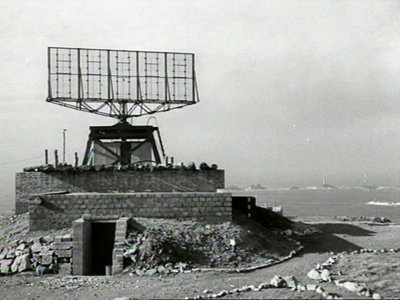The first meeting of the LRS in 2012 was the Video Evening on 11th January. Peter Dick GM4DTH presented The Spies Who Lost the Battle of Britain, the story of British Radar and how the Germans nearly discovered it, a documentary about the Chain-Home (CH) radar system. This was followed by RDF to Radar - A Record of the work of TRE, a related government film which is now declassified. Peter has provided a number of still frames to give some of the flavour of this very interesting historical material.

Peter GM4DTH getting his act together for the video evening.

Cover of the first DVD.

Chain Home Radar Towers at Bawdsey Manor.

IFF display - Identity Friend or Foe - the "blip" is an aircraft echo indicating its range.

Very limited range of CH detection of aircraft flying low at 1000ft.

Increased CH detection range of aircraft flying at 5000ft

Increased CH detection range of aircraft flying at 15,000 ft.

Increased CH detection range of aircraft flying at 30,000 ft.

Chain Home Low stations operating at a wavelength of 1.5m were able to detect aircraft flying much lower than with the longer-wavelength Chain Home equipment.

The GEE system used hyperbolic patterns for navigation. This was further developed after WWII for the Decca Navigator system.

Cavity magnetron operating on 3.3 GHz provided much higher transmitting power than klystrons.

"Window" aluminium foil chaff when dropped from aircraft reflected enemy radar waves of the same wavelength and filled the CRT display with obscuring noise.